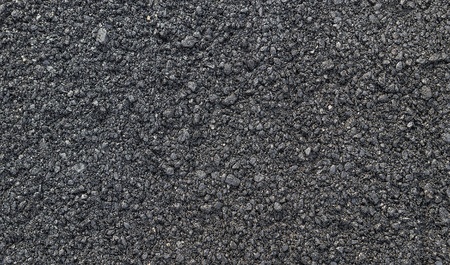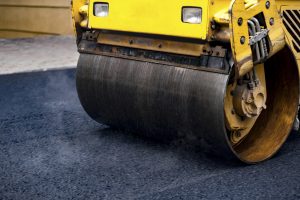Hot Mix Asphalt Paving: Redefining Industrial Property Landscapes
Hot Mix Asphalt Paving: Redefining Industrial Property Landscapes
Blog Article
Opening the Tricks of Warm Mix Asphalt Modern Technology
Exploring the midsts of hot mix asphalt modern technology reveals a globe where precise processes and precise formulas assemble to shape our roads and facilities. The blend of binders, accumulations, and fillers isn't simply a construction task but a strategic orchestration of resilience and effectiveness.
Significance of Warm Mix Asphalt
Hot Mix Asphalt plays a crucial role in contemporary infrastructure advancement due to its toughness and cost-effectiveness. As the most commonly utilized paving material for roads, highways, and car park, Hot Mix Asphalt uses a variety of advantages that add to its relevance in building projects. One vital benefit is its capacity to withstand rush hour loads and extreme weather, giving a reputable and durable surface for transport networks. Additionally, Warm Mix Asphalt is affordable in both preliminary building and lasting maintenance, making it a favored choice for lots of infrastructure tasks.
The resilience of Warm Mix Asphalt comes from its structure, which includes aggregates, binder, and filler products that are meticulously selected and blended to meet particular efficiency demands. This specific combination leads to a flexible and solid sidewalk that can withstand frequent use without considerable deterioration. Furthermore, Warm Mix Asphalt is 100% recyclable, additional improving its sustainability and environmental advantages. In general, the significance of Warm Mix Asphalt in facilities growth can not be underrated, as it continues to be a cornerstone of contemporary building practices.
Components of Asphalt Mixes
The make-up of asphalt mixes consists of very carefully picked accumulations, binder, and filler materials that are important for attaining details efficiency needs. Aggregates are the key part of asphalt mixes, providing stamina and stability. These aggregates can be all-natural, such as crushed rock or crushed stone, or synthetic, like recycled products from old sidewalks. The binder, typically asphalt or asphalt concrete, holds the accumulations with each other and supplies adaptability and resilience to the mix. The selection of the binder is critical as it straight influences the mix's efficiency in various weather condition problems. Fillers, such as moisturized lime or Portland concrete, are utilized to enhance the mix's workability and aging resistance. Angled Parking.
The mix and percentage of these components play a significant duty in determining the quality and efficiency of the asphalt mix. Designers carefully develop the mix to fulfill specific requirements, considering elements like traffic volume, climate problems, and sidewalk life-span. Correct option and harmonizing of accumulations, binder, and fillers are vital for producing long lasting, resilient asphalt pavements.
Mixing and Production Strategies

As soon as the aggregates are chosen, the binder, typically asphalt concrete, is included in bind the products look at this now together. The binder's top quality and amount significantly affect the mix's toughness, versatility, and resistance to environmental variables. Additionally, fillers like hydrated lime or Portland concrete might be incorporated to improve specific qualities of the asphalt mix, such as its workability or wetness resistance.
During manufacturing, the accumulations and binder are heated up, commonly in between 250-325 ° F(121-163 ° C ), to facilitate mixing and make sure proper covering of the aggregates. The blending process should be comprehensive to accomplish an uniform blend that advertises the preferred efficiency attributes of the asphalt. Various strategies, such as set blending or drum blending, are employed to achieve regular and high-quality asphalt mixes for construction tasks.
Variables Affecting Asphalt Efficiency
Aspects influencing asphalt efficiency encompass a range of variables that impact the toughness, longevity, and total high quality of asphalt sidewalks. One vital aspect is the quality of products used in the asphalt mix.

Design factors to consider, such as pavement thickness and water drainage, are vital in making certain the long-lasting efficiency of the asphalt pavement. By meticulously thinking about these engineers, service providers and aspects can enhance Discover More Here asphalt performance and improve the service life of sidewalks.
Lasting Practices in Asphalt Innovation

Furthermore, the growth of warm-mix asphalt (WMA) modern technologies has obtained grip in the last few years. WMA permits the manufacturing and placement of asphalt blends at lower temperatures contrasted to traditional hot-mix asphalt, causing lowered energy intake and greenhouse gas exhausts. Furthermore, making use of permeable asphalt blends can help mitigate stormwater drainage problems by permitting water to penetrate via the pavement and right into the ground, advertising natural water purification and recharge procedures. By implementing these lasting methods, the asphalt market can add to constructing a much more durable and environmentally pleasant framework network.
Final Thought
To conclude, hot mix asphalt innovation plays a critical duty in modern-day framework advancement because of its toughness and cost-effectiveness. By very carefully stabilizing components, employing proper blending strategies, and considering numerous variables, designers can produce top quality asphalt mixes that withstand rush hour loads and extreme climate condition. Accepting sustainable practices, such as making use of recycled materials and warm-mix modern technologies, additionally enhances the environmental kindness of asphalt technology.
Blending and manufacturing techniques in warm mix asphalt technology involve the precise combination and handling of accumulations, binder, and fillers to produce a resilient and high-performance asphalt mix.Variables affecting asphalt efficiency incorporate an array of variables that influence the longevity, long life, and general top quality of asphalt pavements. Sustainable practices in asphalt innovation incorporate numerous campaigns intended at minimizing the ecological effect of asphalt manufacturing and paving processes. By incorporating redeemed asphalt pavement (RAP) and recycled asphalt roof shingles (RAS) into brand-new asphalt mixes, the sector can considerably reduce the usage of raw materials and power, while also lowering landfill waste.
WMA allows for the production and positioning of asphalt blends at reduced temperatures contrasted to standard hot-mix asphalt, resulting site in minimized energy usage and greenhouse gas exhausts.
Report this page